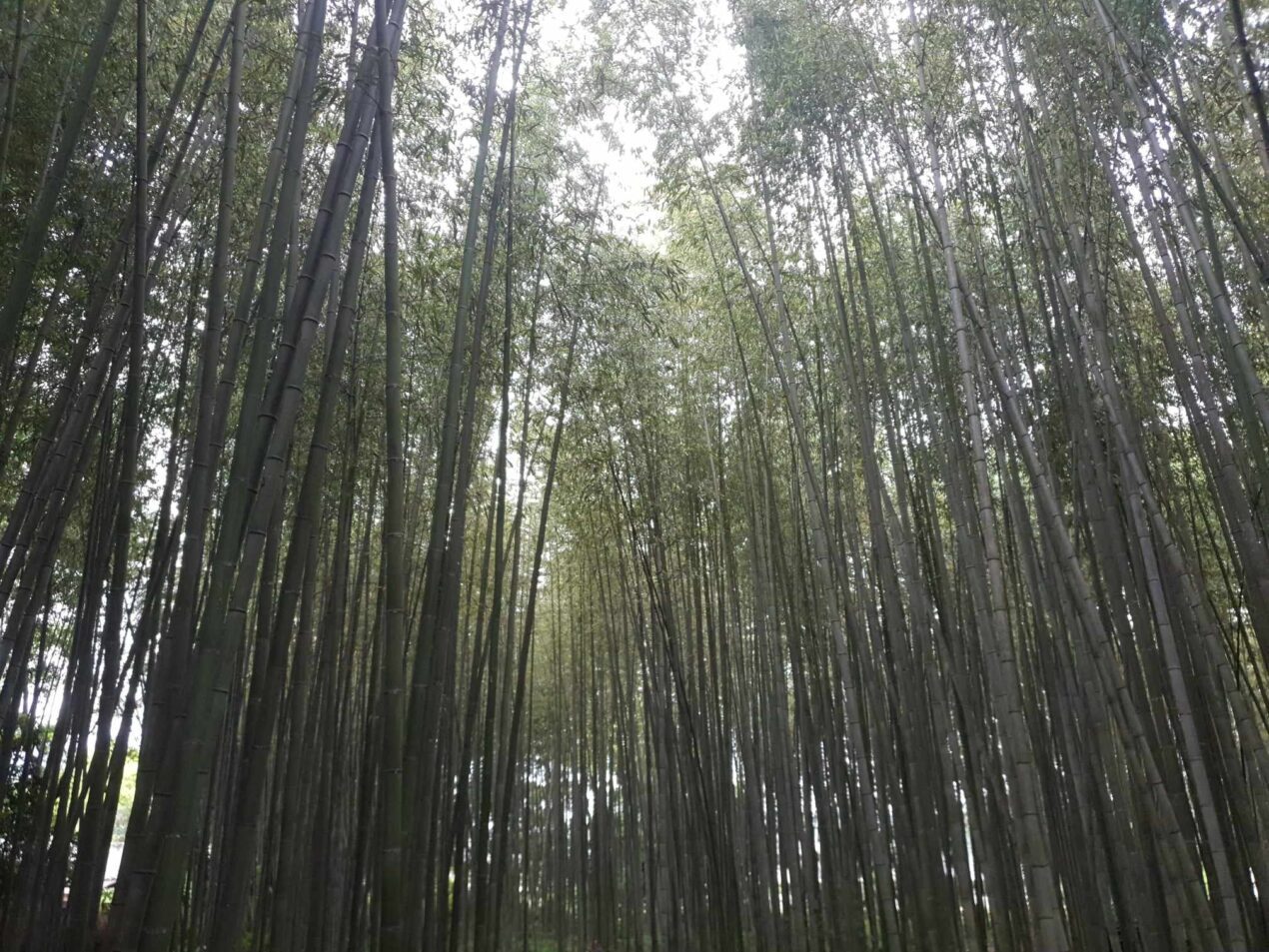Is Arashiyama Bamboo Forest an Ethereal Bamboo Wonderland or Overcrowded Tourist Trap?
Look, I get it. Travel is precious and you don’t want to spend your hard-earned dollars (and newly converted Japanese yen) or time at a destination, experience, or sight that has you feeling worse than that one guy who proposed right next to a cliff and fumbled the ring into the canyon adjacent. Or even worse, something that doesn’t make you feel anything at all.
So, in the interest of allowing you to make a more educated decision about one of Kyoto’s most popular attractions and sightseeing districts, here are my thoughts on social media’s favorite ‘Arashiyama Bamboo Grove’ and if it’s worth visiting or skipping altogether.
I’ll say it. Arashiyama Bamboo Grove didn’t do it for me. It was one of the only sights during my three months living in Japan that didn’t live up to the hype and left me wondering if my time could have been better spent elsewhere. That’s not to say that it was a complete waste as I still got to experience it with one of my best dawgz after several years and several continents apart.
However, if you go to Kyoto’s Arashiyama district and bamboo grove, I would adjust your expectations accordingly and make your bamboo pilgrimage with a plan.
So, is Arashiyama Bamboo Forest the ethereal bamboo wonderland you saw online or is it just another overcrowded tourist trap that can be skipped?
Is Arashiyama Bamboo Forest Worth Visiting?
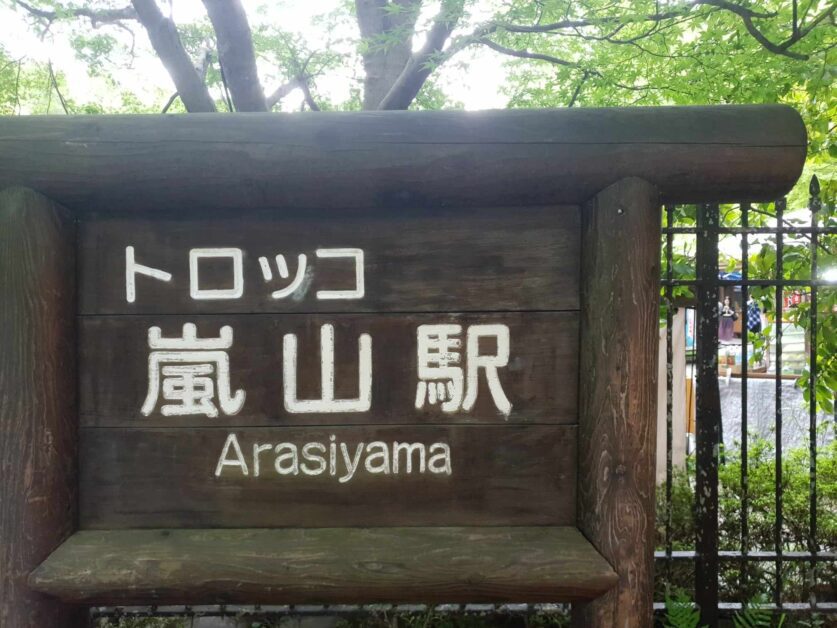
I know I’m no expert photographer. However, I’d say that the photos of Arashiyama you see in this post are a more realistic representation of what you can expect instead of the pristine, otherworldly forest you see online.
I’m not going to knock it completely. The Arashiyama Bamboo Forest is worth visiting… if you keep several things in mind to better prepare yourself and ensure you get what you want out of the experience. And, it’s open 24/7 and free, so the only real expenditure you stand to waste is time.
Here are my practical recommendations for visiting Arashiyama Bamboo Forest in Kyoto that hopefully bring you back down to earth and allow you to adjust your expectations accordingly.
Remember the Wise Words of Norah Jones: “Sunrise, Sunrise”
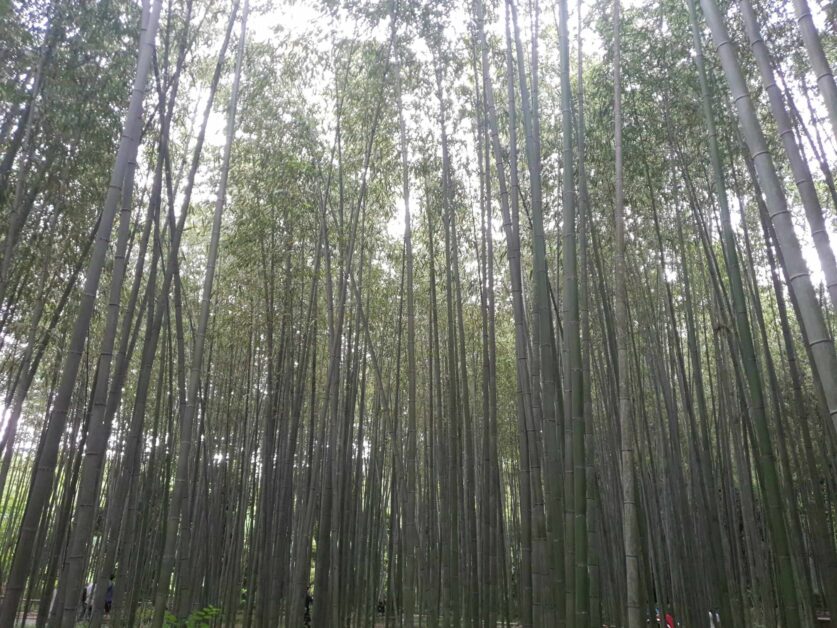
As you can tell, I didn’t go to Arashiyama in the morning.
First, if you do visit Arashiyama, I recommend arriving before sunrise (or just as sunrise is beginning) to beat the crowds and experience the forest how it is meant to be experienced – in quiet, serene, ethereal solitude where morning light sneaks through 5 to 10-meter bamboo trees and casts an air of otherworldliness.
This is what you most likely saw the forest portrayed as on Instagram, TikTok, or whatever other social media platform and/or app you use.
Keep in mind that you likely won’t be the only one with this “early bird catches the worm” mentality so there’s a high likelihood that you won’t have the forest to yourself.
If you’re staying at and/or near Kawaramachi-dori, Kyoto’s downtown district and shopping street, it takes roughly (at minimum) one hour to get out to Arashiyama via the Kyoto metro (which opens at 5 AM).
It’s Small & Crowded
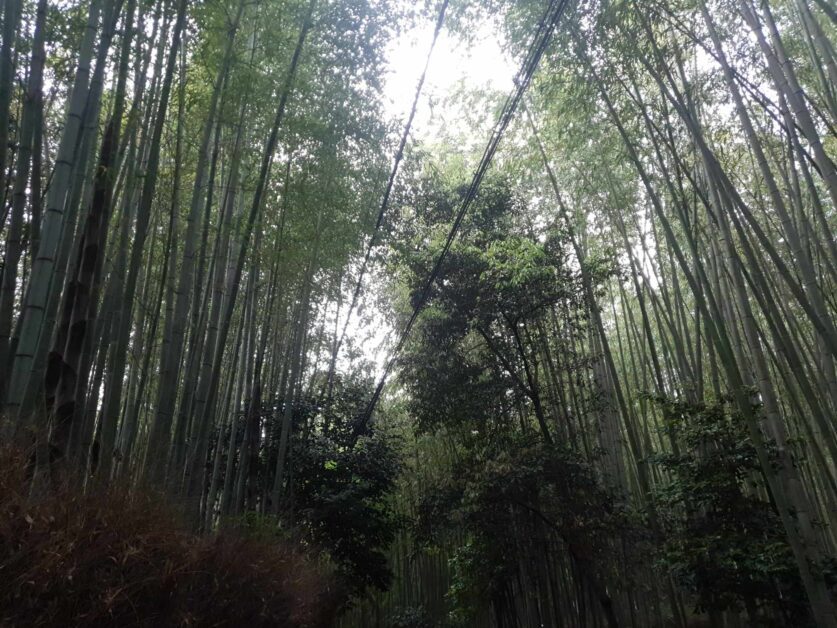
I had to point my camera upwards to avoid capturing unsuspecting tourists in the picture.
Second, Arashiyama’s Bamboo Forest is not a particularly large or long stretch of bamboo trees, as it only spans roughly 200 meters. You can complete this walk in less than 45 minutes.
And, if you get there after sunrise, you’re more than likely going to encounter a gaggle of selfie-snapping tourists (yourself included) and tours that clog up the paths (including random rickshaw guys transporting bloated tourists).
I struggled to even take a photo without a single person in the background during the several hours I was at Arashiyama.
Oh, and there’s the occasional vending machine scattered throughout the short 200-meter walk, which I’ll just say – the Pevensie children weren’t able to slug a Coke Zero while exploring the wonder of Narnia.
So, that solo shot of you that makes it look like you have the entire bamboo forest to yourself, you know, the one you probably saw on a popular Instagram influencer’s page, is going to have to wait. Or, you are going to have to time things perfectly (if at all) to ensure that there are no goofy-looking tourists (like myself) ruining your magical shot.
Seasonal Timing Can Help
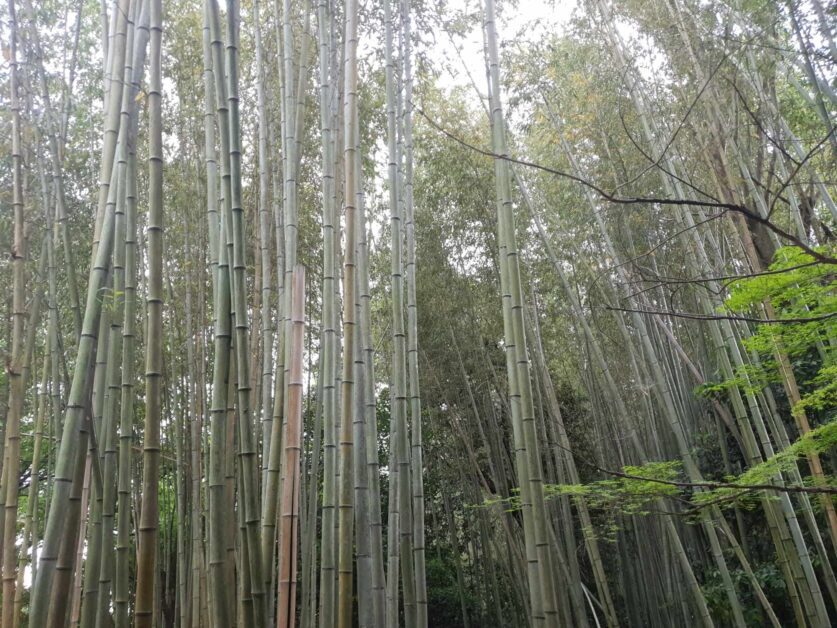
I think you could drive a mid-sized sedan through some of the bamboo trees.
Third, the photos or videos that you’ve seen of Arashiyama are likely edited to look greener, denser, and more majestic than they actually are. The bamboo trees are spaced considerably apart from one another so it isn’t a dense forest, but rather somewhat indiscriminately placed trees that don’t photograph that well (without editing).
If you want to view the forest when it’s at its finest, that’s during summertime – when the green foliage and colors are at their most vibrant.
I visited a bit too early (April), which meant that the trees just didn’t really ‘pop’ with color and looked somewhat dead and darkish.
Arashiyama is a District With More to See Than the Bamboo Forest
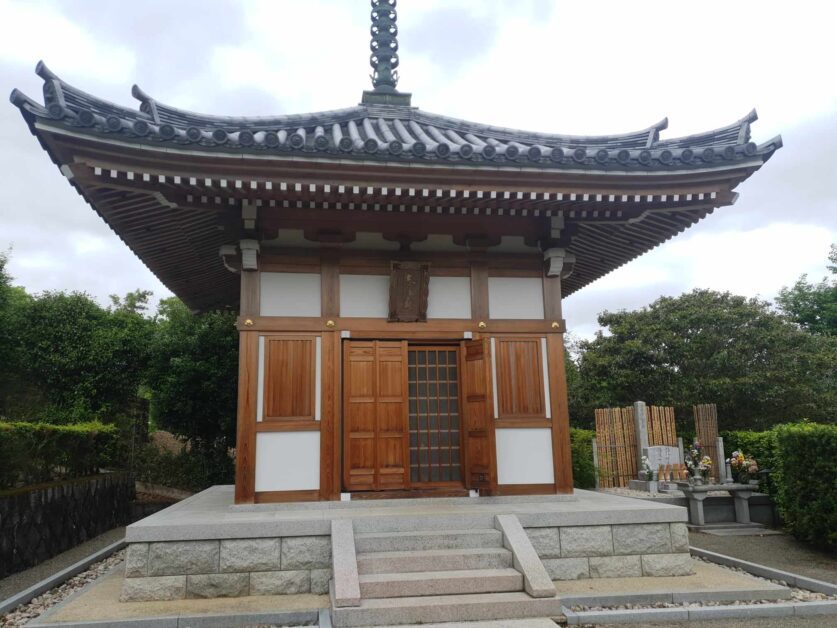
Fourth, understand that the Bamboo Forest isn’t the only thing to see at Arashiyama. It’s a district. The Bamboo Grove is just one piece of it.
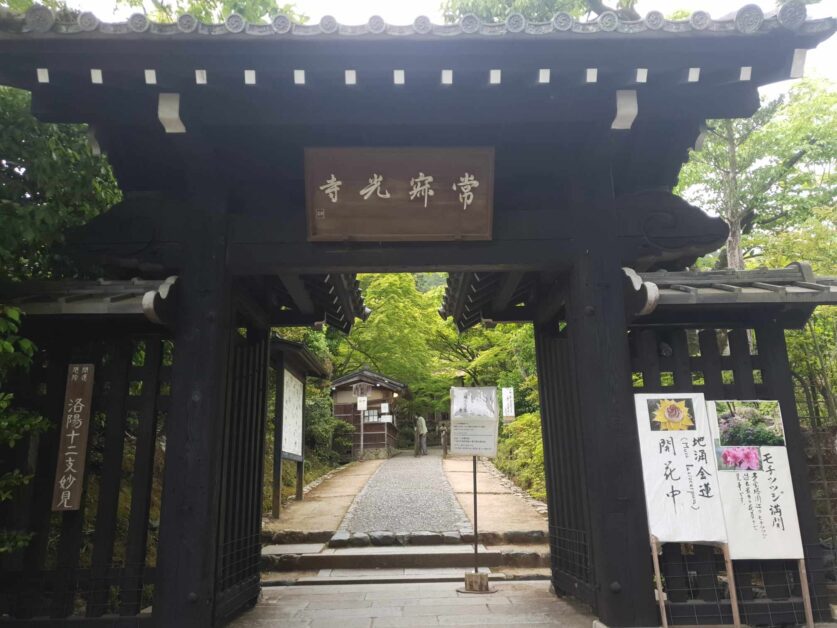
Arashiyama also includes (1) Iwatayama Monkey Park, where you can feed and interact with wild monkeys, (2) Togetsukyo Bridge, for memorable views of surrounding mountains and foliage, Katsura River, and Japan’s famous cherry blossoms (in April and May), (3) UNESCO-designated ‘Tenryu-Ji Temple’ for peaceful gardens and historical artwork, (4) Onsen (hot spring), to soak in after a long day of exploring, and (5) Traditional fishing experiences, where trained cormorants (aquatic birds) are used in tandem with fire (for light) to catch popular river fish (after all, Arashiyama is a fishing village).
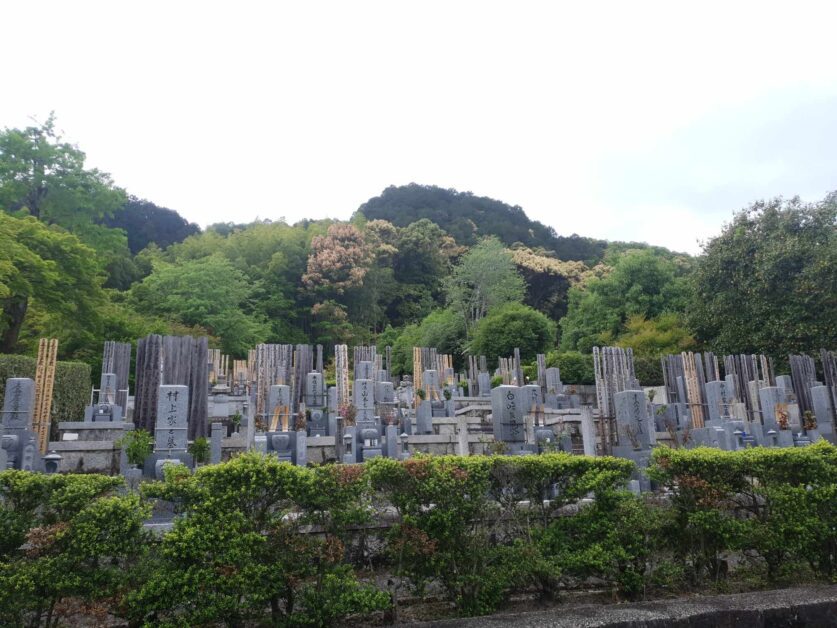
There’s a handful of Japanese restaurants, quaint little cafes, and snack stalls (ex. Taiyaki, rice dumplings, and beef tongue skewers), to grab a bite and get a taste of Kansai region favorites.
Also, if you’re really sold on an uninterrupted bamboo forest experience, see my last point.
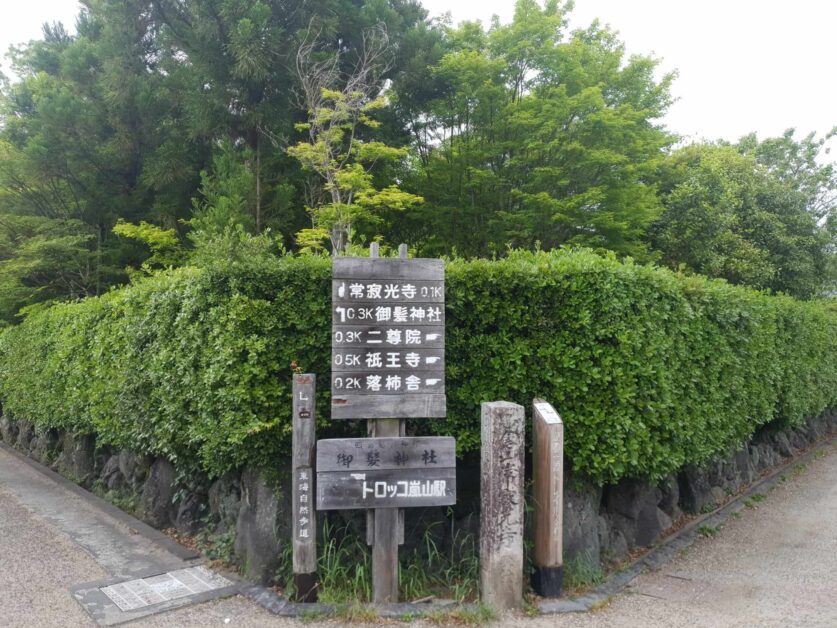
My favorite part of my trek out to Arashiyama was walking the quiet back roads and simply getting a quick glimpse into how people live (without being overly invasive in the process). It was also just a great chance to catch up with my dawg, who I’ve now hung out with in seven-plus countries (and counting).
Don’t Make It Your Only Attraction of the Day
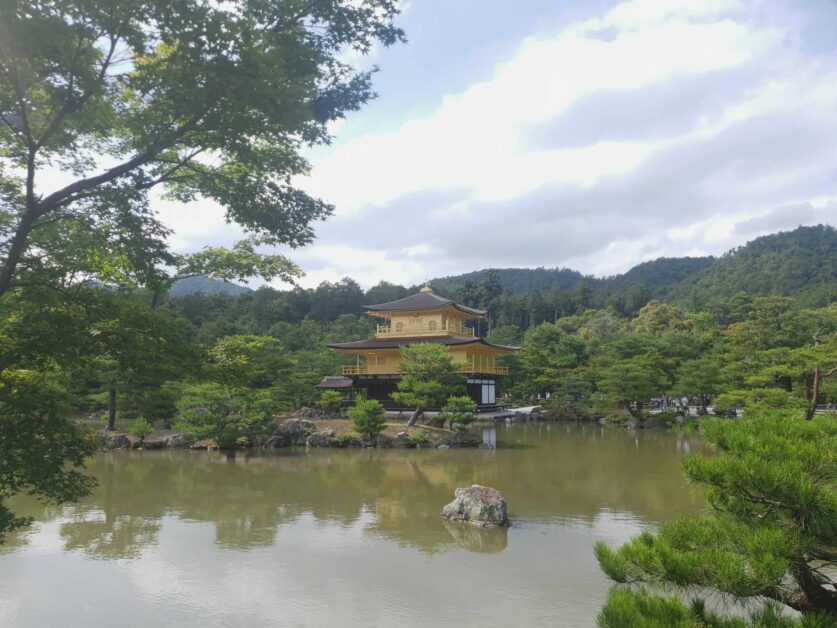
Fifth, consider pairing it with Kyoto’s ‘Kinkaku-ji’, aka the ‘Temple of the Golden Pavilion’, which sits just north of Kyoto. Kinkaku-ji is a Zen Buddhist temple that is one of Kyoto’s most popular attractions (and designated National Historic Site). In my opinion, Kinkaku-ji is best visited at sunset to experience the reflection of the sun on the gold leaf-coated pavilion and in the pond it sits on.
While there’s no particularly direct route to get to Kinkaku-ji from Kyoto’s downtown, the Golden Pavilion can be accessed within 35 to 45 minutes from Arashiyama Station – by combining local rail and city bus. The 204 and 205 city buses drop you off right at the entrance to Kinkaku-ji.
If You’re Amped on Bamboo & Don’t Want the Crowds…
If you are sold on an ethereal bamboo forest experience, consider making the 20 to 25-minute, 1.5 km trek north to Adashino Nenbutsu-ji. passing by the Nisonin Temple on your left. Or, hop in a taxi or private car, which takes just under 10 minutes. Adashino Nenbutsu-ji is a Buddhist temple to honor the spirits of the dead, boasting over 8,000 Buddhist statues.
It also happens to have a serene stretch of bamboo forest with stairs, smaller than Arashiyama but absent the hordes of tourists you’ll find just 25 minutes to the south. This is the perfect alternative to Arashiyama and your best chance of having a bamboo forest all to yourself.
Continue north up to Otagi Nenbutsu-ji, a Buddhist temple with over 1,000 moss-covered Rakan (saint) statues to complete the trip.
My recommendation: It may be worth just first checking out Arashiyama and then making your way up to Adashino Nenbutsu-ji to see the difference for yourself.
Pale Ale Travel Tip: After a long day of exploring, you deserve some high-quality beef and ramen. Make sure to read my guide to the top yakiniku joints in the Kansai region (which has two of my favorite Wagyu spots) and favorite ramen restaurants in Kyoto (including what I consider to be the best ramen in Japan – Taiho Ramen).
Getting to Arashiyama
Arashiyama is surprisingly easy to get to (at least comparatively to Kinkaku-ji) and can be accessed within 30 minutes (maximum) from Kyoto Station via metro.
From Kyoto Station, take the JR Sagano Line (part of the JR San-in Line) to Saga-Arashiyama Station, the Hankyu Line to Arashiyama Station, or the Keifuku Randen Tram Line to Arashiyama Station. The JR Sagano Line will take you straight through to Saga-Arashiyama Station, while the Hankyu and Keifuku Randen will require you to change trains/lines.
Once at Arashiyama Station or Saga-Arashiyama, exit and follow the signs that lay out a clear path to the Bamboo Forest. Or, just follow the crowds. This takes no more than 10 to 15 minutes. The stations are a five-minute walk from one another, so there really isn’t any stress if you end up at one or the other.
Pale Ale Travel Tip: One of the top experiences in Japan that I had absolutely no idea what to expect was Hiroshima’s ‘Okonomimura’ – aka the ‘okonomiyaki village’. It’s four floors of one of Hiroshima’s most famous foods (okonomiyaki) and Japan’s largest food theme park. You can read more about it in my post ‘M. Night Shyamalan’s Okonomimura’.
If You Only Have a Limited Time in Kyoto
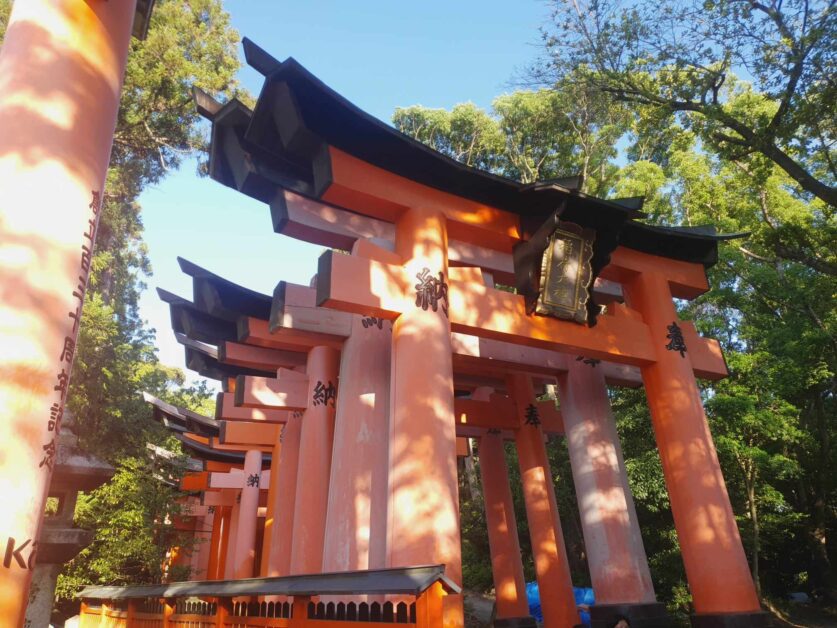
During my three months living in Osaka, I spent nearly one month in Kyoto. At first, I was relatively ambivalent towards Kyoto as I made my initial trip smack dab in the middle of Golden Week (Japan’s most traveled and hectic holiday time). However, when I returned (following a break-up at an onsen in Hakone), I re-warmed up to the city quickly and was blown away by both its visible and hidden charm and personality.
If you only have a limited time in Kyoto and don’t want to run all around the city just to get out to Arashiyama, I recommend heading to the popular, bright orange shrine of 10,000-plus torii gates ‘Fushimi Inari’ and making your way up the 273-meter high mountain with breathtaking views of Kyoto instead.
But don’t worry, it’s an easy walk/hike that allows you to go up as far as you want and has countless resting and viewing points to take in Kyoto sunrises or sunsets. The crowd noticeably thins the farther up you go and at countless points on my jaunt to the top, it felt like I had the towering bright orange gates just to myself. There are also numerous snack and souvenir stalls at the base – my favorite being the Wagyu skewers.
In Big Body’s head-to-head Kyoto sites and shrine match-ups, Fushimi Inari emphatically edges out Arashiyama.
Finally, Fushimi Inari sits just south of Kyoto’s ‘geisha district’, Gion, which boasts traditional Japanese teahouses, high-end restaurants, and street snacks (along with possibly the coolest Starbucks you’ll ever go to in your life), making it easy to kill two birds with one stone.
Some of my best memories in Kyoto are hiking Fushimi Inari to catch a stunning sunset and then running back along the Yodogawa River up to Gion for dinner.
Pale Ale Travel Tip: You can read more about why Fushimi Inari became one of my favorite spots to frequent (and hike) during my time in Kyoto in my in-depth breakdown answering ‘Is Fushimi Inari Worth It?’.
Arashiyama Bamboo Forest: Temper Your Expectations
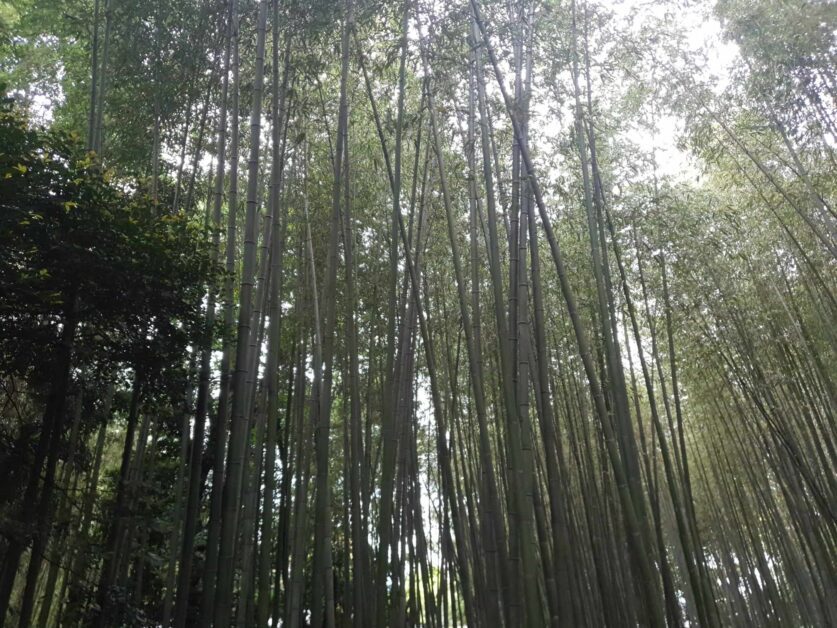
While I’m not a great photographer, I do think these sad pictures capture the reality of the Bamboo Forest at Arashiyama.
While I felt that Arashiyama left much to be desired and wasn’t exactly the ‘ethereal bamboo wonderland’ that thousands of social media influencers make it out to be on Instagram, that’s not to say that it isn’t worth visiting at all. You simply need to adjust (and temper) your expectations and plan properly.
And, make a day of it. Remember, there’s far more to Arashiyama than just the several hundred meters of bamboo trees. Or, if you think it’s too big of a gamble to take on your trip to Kyoto, check out Fushimi Inari instead – this you won’t regret (I promise).
If you’ve been to Arashiyama in Kyoto, I’d love to hear from you in the comments. Did you think it was worth it or would you skip it altogether? How would you approach your trip to Kyoto if you only had a finite amount of time?
Or, if you have any questions about planning your Japan trip and itinerary (specifically in the Kansai Region), please don’t hesitate to reach out to me via email (info@palealetravel.com).
Travel well everyone,
Big Body
Big Body is a voracious lov…eater, a cowardly fighter, and a self-proclaimed curry goat BBQ-eating champion (don’t forget the donkey milk) who likes Stoicism, baseball, and writing in the third person. Having worked for himself for the last 7 years, he isn’t particularly successful but he does still drink ice-cold Sapporo draft beers with the best of them and knows his way around a Dai Pai Dong or two. He is based in Hong Kong but you can still find him in Saigon, Osaka, and Vienna for extended periods.
